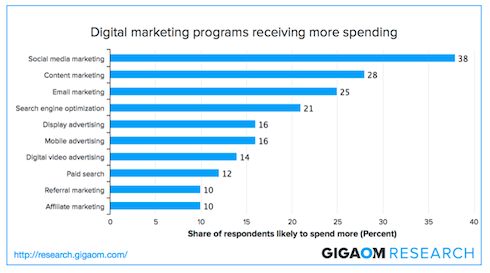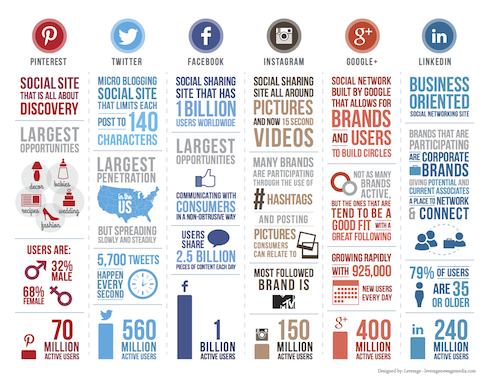By adaptive - October 14th, 2014
Social advertising can be the most powerful weapon if your corporation understands the rules of engagement
Social media advertising has experienced the kinds of ups and downs usually associated with a troubled Hollywood star. One minute in favour, the next vilified for bad behaviour, like Pinterest and their first sneak advertising attempts that were met with distaste.
However, 2014 appears to be the year in which social media advertising has started to really flex its muscles and become a force for brand brilliance. In this, the first a of three part series examining social advertising, we will be looking how it is evolving and how corporations can harness this for their business.
Social media marketing spend is expected to reach $135 billion in 2014 and make up nearly 25% of total ad market by 2015. Budgets are doubling, content marketing is on the rise and social advertising is evolving into something far more dynamic and focused than ever before.
Brands can get better performance and engagement from social advertising, and consumers feel more comfortable with the way in which they are presented and how they can interact with them. Mistakes have been made, but these are serving to drive the value and capability of these social advertising features further.
Andy Atalla, Founder of atom42 outlines some of the elements that brands can take advantage of when looking for a social advertising platform:
- Facebook – the primary mechanisms on Facebook are Facebook Ads, Promoted Posts and Facebook Offers. Facebook has also recently introduced Video Ads.
- Twitter – Twitter allows businesses to promote their accounts and Tweets as well as promote “trends”.
- LinkedIn – This network can create an advert, sponsor content or use Sponsored InMail to run an email marketing campaign.
- Google+ - Advertising on this platform comes in the form of +Post ads and can only be used by those brands that have a significant number of G+ followers.
- Pinterest – Brands can “Promote Pins” to purchase keywords to improve their positioning in search results and within category feeds on the site, but this is still only available in the USA.
- Instagram – This platform has been bought out by Facebook and uses a CPM approach to advertising. It’s expensive, but there is significant reach.
What’s inside?
Knowing the mechanisms available to your business is one thing, but it doesn’t mean your corporation should now go out and spend a fortune on social ads and sponsored posts. They all have differing levels of reach and engagement and some networks, like Twitter, don’t really show how well their ads compare with the rest.
It’s also worth establishing how transparent you want to be – native advertising, when sponsored content is disguised as something organic, can chase customers away and negatively impact a reputation. Your corporation needs a clear strategy and budget – an established presence on the social platform of choice, and an understanding of your target market.
“It’s not essential to be a huge brand to use social media advertising effectively, although a bigger budget is undoubtedly bound to influence your results,” says Tegan Denwood, Social Media Specialist at GNT Media. “Targeting your advert correctly is key, so make sure you’ve narrowed down who your ad should be targeting.”
What makes social advertising’s heart beat just that little bit faster than traditional advertising is data. It has the potential to work incredibly well because advertisers have access to reams of rich customer data that can be used to target advertising more effectively and personally than on any other platform.
“Say your ideal customer is a male in his 20s living in London,” says Euan McTear, Marketing Manager at Davidson Asset Management. “All you have to do is tick a few boxes and your ad will be shown to exactly that audience and to nobody else.”
McTear raises a valid question – who is using social advertising? Some of the biggest and most popular campaigns of 2013-2014 include Dove Real Beauty, Kern & Sohn Precision Scales and British Airways. Each of these companies used social media advertising routes and campaigns to actively promote their business and had impressive results.
The Three UK campaign tapped into the more light-hearted aspect of the internet with their #DancePonyDance campaign. It didn’t have a cat, but the pony’s fame became global being seen by nearly 10 million views and significant shares across Facebook and Twitter.
Col Skinner of Profoundry offers some more detail on which platforms suit which markets more effectively: “Facebook is perfect for B2C, Twitter is perfect for virtually any business and LinkedIn is great for B2B.”
Another advantage that social advertising has over tradition methods is speed. Brands can use social ads on whichever platform they choose, using any number of themes, to assess how their markets react and then use the feedback and responses to fine-tune content and campaigns.
Traditional above and below the line campaigns can take months of tweaking and fine-tuning before they’re launched. A tweet or a post can be swiftly updated and changed to match a sudden trending topic or event, allowing brands impressive control over how they engage with their target markets.
“As well as promoting a brand’s products and services, these ad channels can be used to grow social followings, engage with consumers, manage social communities, increase brand reach and brand awareness,” says Atalla. “And, with a ‘Buy Now’ button in the pipeline, corporations will soon be able to use social channels as sales platforms, and this has huge potential.”
McTear points out that the best way to use social advertising is to create content that fulfils a commercial purpose whilst also fitting in with the network: “Given that with Facebook, Twitter and LinkedIn, the advertising is placed alongside natural content, it’s important that the ad isn’t skipped over, but also that it doesn’t stick out like a sore thumb,” he adds.
Rich Brady, Operations Manager at Recruit Packs believes that as social advertising becomes more popular it will evolve into a solution with far smarter targeting options and applications.
“Despite being warned about security settings and keeping things private, users give away information on all aspects of their lives, their wants, needs and preferences,” he says. “Social platforms are going to become even more adept at harnessing this data, cross checking it with other platforms and allowing companies to really drill down to their perfect customer.”
Social advertising is a rich space with plenty of interesting changes and opportunities afoot so in the next part we will be looking at how to build a social media ad campaign with real world examples.
[Image Source: Freedigitalphotos.net]
Next Reads
November 2014, London
Become a social business! #CSMEU is the largest and most senior meeting of social media and marketing execs, giving you unrivalled insight into how social can drive your business growth & competitive advantage
Brochure Programme


